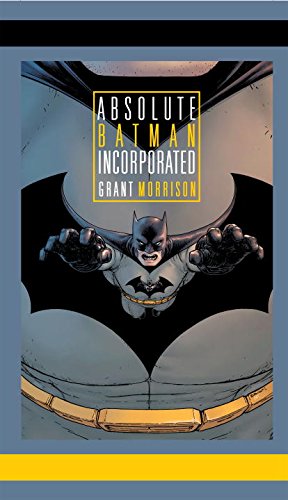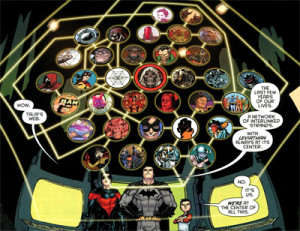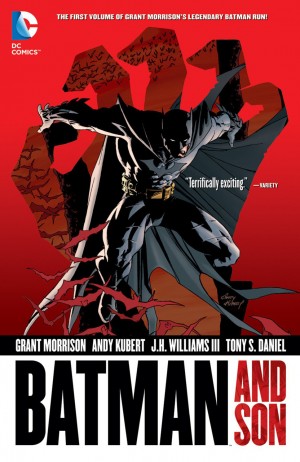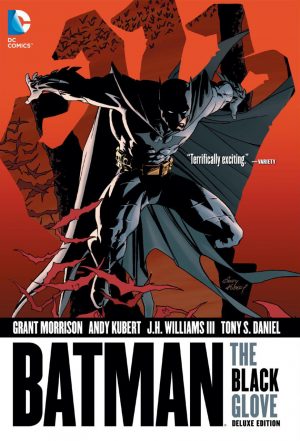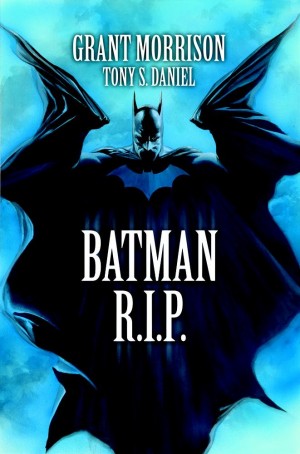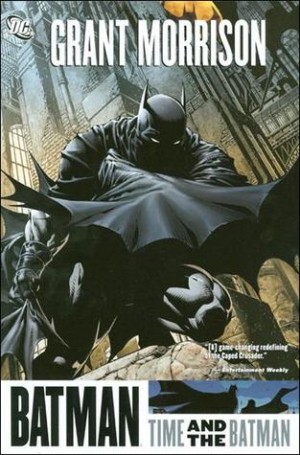Review by Karl Verhoven
Depending on your opinion of the involved artists, between 85% and 95% of Batman Incorporated is sheer clever, exhilarating, page-turning fun. If you’ve enjoyed it, this hardcover and slipcased version is surely worthwhile.
The starting point is Batman’s return from death in The Return of Bruce Wayne. As he worked his way back to the present day he experienced visions of a future for which he wanted to be prepared, and his solution is to franchise Batman worldwide, selecting the candidates himself. We’re quite the way into the book before these reasons are explicitly explained.
Before then writer Grant Morrison has taken us on a global tour constantly shifting his narrative approach, staring with a mad mash-up of Manga and the 1966 Batman TV show in Japan. “I read somewhere that violent anti-social crime’s almost unheard of in Japan”, spouts ridiculous villain Lord Death Man, “How’s about we take them to school?” This is a representation of the wildly inventive storytelling throughout, in which all interpretations of Batman over the years are considered valid. As the narrative continues Morrison introduces Leviathan, an organisation with tentacles extending through all levels of society, and one intending to start World War III.
Morrison teams Batman with his son, the new Robin, with Nightwing, with Catwoman, with Batwoman, and with the assorted foreign heroes, most prominently the Argentinian El Gaucho, the African Batwing, the Native American Man of Bats, the Australian Dark Ranger, and the Knight and the Hood, both from England. He provides a reprise for some of his previous villains and their technology, and takes us through a mind-bending tour into the psyche of addled scientific genius Dr Netz before revealing the true power behind Leviathan. We have Batman in the future, a virtual Batman and a mad British public school sequence with no Batman at all. It’s great stuff, and we’re only a third of the way through the book.
It’s only in the final chapters that Morrison’s masterplan derails very slightly, with an ordinary finale requiring a couple revelations straight from the magic hat, but the journey has been well worth the ride. Even then, those climactic pages are parsed with a fantastic conversation between Bruce Wayne and Police Commissioner Gordon. It’s a sequence that pulls the drawstring on Morrison’s entire seven year run on Batman.
The art throughout rarely dips below excellent, most of it from Chris Burnham whose progress from a very capable starting point is truly astonishing, and can be tracked on the pages. Yanick Paquette draws some of the earlier chapters, and assorted artists are responsible for the brief spotlights on the assorted overseas heroes. Scott Clark, Frazer Irving, Jorge Lucas and Cameron Stewart also turn in chapters, with only Lucas disappointing, with cramped and seemingly rushed art on a tale written by Burnham.
One notable manner in which this edition differs from the material it gathers, is that almost all the material beyond the earliest issues is now drawn by Burnham. The pressures of a monthly deadline led to other artists drawing between three and six pages per issue towards the end of the run. This was from his layouts, but the effect was jarring. The Absolute edition permits him to draw those pages again himself, and it’s a far more satisfying read. Those on a budget, though, can search out the original editions: Batman Incorporated, Demon Star and Gotham’s Most Wanted.
